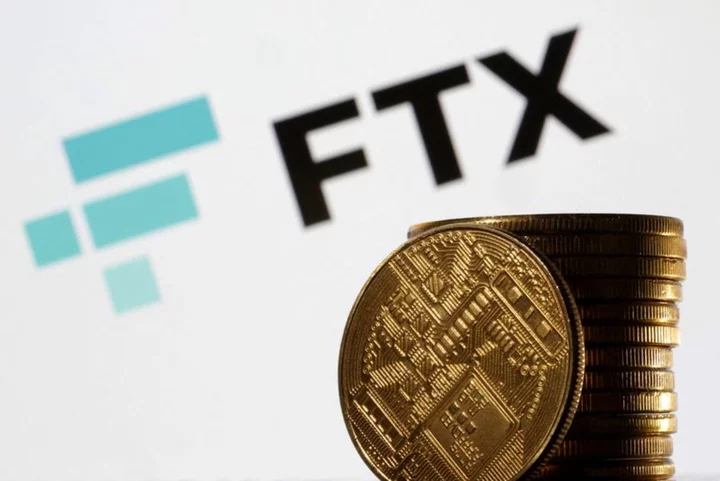
Global regulators seek to crack down on decentralised finance
By Huw Jones LONDON Global securities regulators set out on Thursday their first blueprint to make participants in
1970-01-01 08:00

Philips to Pay at Least $479 Million For Apnea Machine Cases
Koninklijke Philips NA officials have agreed to pay at least $479 million to resolve part of a sprawling
1970-01-01 08:00
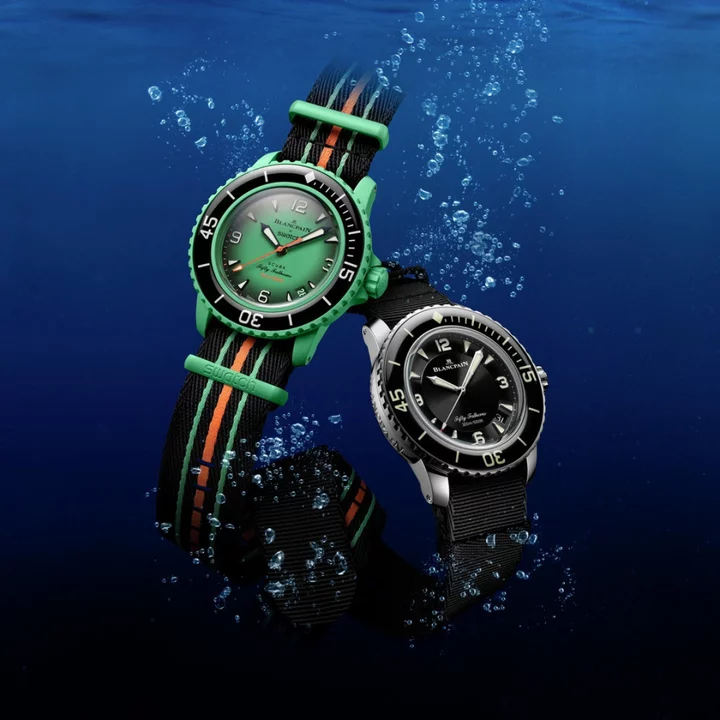
Blancpain X Swatch: Everything we know about the latest watch collaboration
Blancpain X Swatch: could this be the “innovative” collaboration they say it is? The Swatch collaborations are back after a viral launch of the Omega MoonSwatch back in March last year. Marking the 70th anniversary of the “Fifty Fathoms” collection, luxury watchmaker Blancpain says collaborating with Swatch will create a “playful” and “unexpected” version of its so-called “iconic” scuba diving watch. The watch was built for French combat divers who required reliable watches that function underwater. Now, the two well-known watch brands are teaming up for a “non-limited collection” which will feature five models full of “joie de vivre,” – which loosely translates to “enjoyment of life”. A press release by Blancpain noted the brands are “diving into the five oceans of the blue planet, combining the best of both brands with innovative, bioceramic, water-resistant timepieces and a mechanical movement with a 90-hour power reserve”. But does this collaboration really meet the hype? With the brands finely crafted advertisements in newspapers across the United States, including the New York Times, Washington Post, and LA Times – teasing consumers for what is to come, could this be what watch lovers hoped for? Here is everything you need to know about the Blancpain X Swatch collection collaboration When will the Blancpain X Swatch collection launch? Watch lovers, have no fear as the Bioceramic Scuba Fifty Fathoms drops worldwide on 9 September, according to an Instagram post by Swatch on 4 September. Since its announcement, Swatch and Blancpain have released several teasers – getting fans excited for what is yet to come. “The collection faithfully reproduces all the Fifty Fathoms hallmarks, such as superior water resistance, outstanding legibility, mechanical movement secured rotating bezel, and anti-magnetic protection,” Swatch said in one of its Instagram posts and people loved it. One user commented under the post “Shut up and take my money,” while another said: “Much better than Swatch-Omega collab!!!”. What will the collection look like? Blancpain X Swatch will be launching five models with a “unique and patented blend of two-thirds ceramic and one-third biomaterials derived from castor oil.” Each model is named after the world’s five oceans while featuring different bright colours with the words “Blancpain Fifty Fathoms X Swatch inscribed inside.” The colours are the Atlantic Ocean in blue, the Arctic Ocean in red, the Pacific Ocean in yellow, the Indian Ocean in green, and the Antarctic Ocean in white. For Blancpain President and CEO Marc A. Hayek, this collaboration is highly symbolic: "Without Swatch, the Swiss watch industry would simply not have survived and enjoyed such a wonderful destiny. “This collection is a source of pride for me. We owed it to ourselves to work with this brand that is as much a pioneer as we are – a reality vividly proven with this collection. Swatch has brilliantly reinterpreted our iconic model, in its own way, with its own vision,” Hayek adds. “As a keen diver myself, I really appreciate the attention to detail in this collection and the many references to the Fifty Fathoms. The fact that it is water-resistant to a depth of 91 metres – corresponding to exactly 50 fathoms, a nautical unit of depth – is a fantastic nod." I want to know more about the models and price points Watch fanatics, we’ve got you covered with all you need to know about each model, style and price point, according to the Swatch website. First up we have the Arctic Ocean: Price: £340 Case Material: Beige Bioceramic case including crown Case diameter: 42.4mm Case thickness: 14.4m Lug to lug distance: 48.0 mm Movement: SISTEM51 mechanical movement Water resistance: 50 fathoms (91/300ft/9 bar) Glass: Biosourced material with anti-scratch coating Hand, hour markers, 60 minutes diving scale: Grade A Super-LumiNova Bezel: One-direction rotating bezel in beige Bioceramic material with anti-scratch coating insert in orange Strap: NATO strap made from recycled fishing nets removed from the sea Pacific Ocean Price: £340 Case Material: Yellow-orange Bioceramic case including crown Case diameter: 42.3 mm Case thickness: 14.4 mm Lug-to-lug distance: 48.0 mm Movement: SISTEM51 mechanical movement Water resistance: 50 fathoms (91 m / 300 ft / 9 bar) Glass: Biosourced material treated with an anti-scratch coating Hands, hour markers, 60 minutes diving scale: Grade A Super-LumiNova Bezel: one-direction rotating bezel in warm yellow Bioceramic material with anti-scratch coating insert in black Strap: NATO strap made from recycled fishing nets removed from the sea Atlantic Ocean Price: £340 Case Material: blue Bioceramic case including crown Case diameter: 42.3 mm Case thickness: 14.4 mm Lug-to-lug distance: 48.0 mm Movement: SISTEM51 mechanical movement Water resistance: 50 fathoms (91 m / 300 ft / 9 bar) Glass: Biosourced material treated with an anti-scratch coating Hands, hour markers, 60 minutes diving scale: Grade A Super-LumiNova Bezel: one-direction rotating bezel in ocean blue Bioceramic material with anti-scratch coating insert in black Strap: NATO strap made from recycled fishing nets removed from the sea Indian Ocean Price: £340 Case Material: green Bioceramic case including crown Case diameter: 42.3 mm Case thickness: 14.4 mm Lug-to-lug distance: 48.0 mm Movement: SISTEM51 mechanical movement Water resistance: 50 fathoms (91 m / 300 ft / 9 bar) Glass: Biosourced material treated with an anti-scratch coating Hands, hour markers, 60 minutes diving scale: Grade A Super-LumiNova Bezel: one-direction rotating bezel in green Bioceramic material with anti-scratch coating insert in black Strap: NATO strap made from recycled fishing nets removed from the sea Antarctic Ocean Price: £340 Case Material: ice white Bioceramic case including crown Case diameter: 42.3 mm Case thickness: 14.4 mm Lug-to-lug distance: 48.0 mm Movement: SISTEM51 mechanical movement Water resistance: 50 fathoms (91 m / 300 ft /9 bar) Glass: Biosourced material treated with an anti-scratch coating Hands, hour markers, 60 minutes diving scale: Grade A Super-LumiNova Bezel: one-direction rotating bezel in ice-white Bioceramic material with anti-scratch coating insert in dark grey Strap: NATO strap made from recycled fishing nets removed from the sea Where can I buy the Blancpain X Swatch collection? The non-limited collections mean the collaboration is set for continuous rollout, so the good news is – you won’t have to rush to the nearest Swatch store to grab yours as soon as possible. With the worldwide launch taking off on 9 September, you can purchase your selected watch in the nearest Swatch store. What is bioceramic made of? Swatch first began converting its collections to use a new bio-sourced plastic derived from castor oil in 2020. This new plastic is also combined with ceramic to create “bioceramic”. Noted by Swatch as a “recipe for innovation,” now, similar to the MoonSwatch, this year’s collab is housed in Swatch’s hybrid plastic-ceramic material. But what makes this watch slightly more pricy is the inside, built-in with an automatic movement in place of quartz. Despite the fancy upgrade, the Bioceramic Scuba Fifty Fathoms gives buyers the chance to wear the branded name on their wrists for hundreds of pounds. Read More Period and fertility tracking apps scrutinised over data security concerns World’s largest wind turbine breaks record for power generated in a single day AI can help generate synthetic viruses and spark pandemics, warns ex-Google executive Inside the world of luxury watch robberies as owners warned ‘Rolex Rippers’ could be watching them Best smartwatches for kids 2023 – GPS, cameras, games and more
1970-01-01 08:00
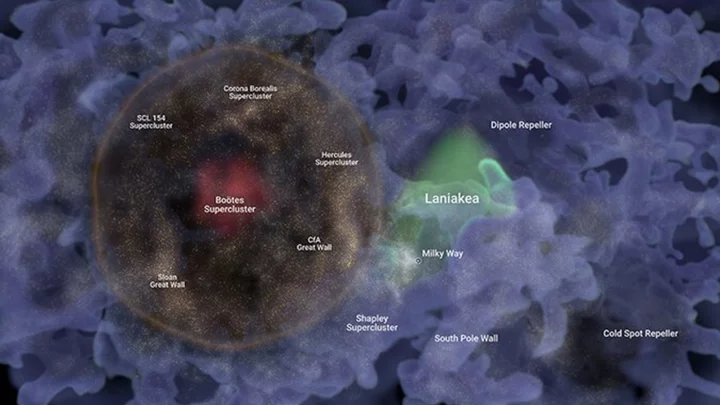
Massive bubble of galaxies could be ‘fossil of the Big Bang’, say scientists
A huge bubble of galaxies that is one billion lightyears across could be a remnant of the ripples caused by the Big Bang, according to astronomers who have mapped the structure. The structure, named Hoʻoleilana by University of Hawaii scientists, is thought to have been caused by so-called Baryon Acoustic Oscillations (BAOs). These were ripples in the particles of the early Universe in the period following the Big Bang, when planets, solar systems and galaxies were not yet fully formed. As the ripples went outward, they created areas of density in the particles, causing bubble-like structures in which galaxies eventually coalesced. Until now, the BAOs were just a prediction – part of the wider Big Bang theory. No specific structures in the Universe had been found which mimicked their patterns. But Hoʻoleilana fits the description of these huge cosmic bubbles perfectly, according to Brent Tully, who led the study at the University of Hawaii’s Institute for Astronomy. “We were not looking for it. It is so huge that it spills to the edges of the sector of the sky that we were analyzing,” he said. “As an enhancement in the density of galaxies it is a much stronger feature than expected. The very large diameter of 1bn light years is beyond theoretical expectations. “If its formation and evolution are in accordance with theory, this BAO is closer than anticipated, implying a high value for the expansion rate of the universe.” The bubble is absolutely huge. It is made up of several superclusters, structures which themselves are thought to be among the Universe’s largest arrangements of matter. This includes the Hercules Supercluster, the Corona Borealis Supercluster and the Sloan Great Wall. All of these structures contain thousands of galaxies. In the middle of Hoʻoleilana sits the Bootes Supercluster and the Bootes Void, an immense space of nothingness which is an incredible 330m lightyears across. Daniel Pomarede, from the CEA Paris-Saclay University, who contributed to the research, said: “It was an amazing process to construct this map and see how the giant shell structure of Ho’oleilana is composed of elements that were identified in the past as being themselves some of the largest structures of the universe.” The research was published on 5 September in The Astrophysical Journal. Sign up to our free Indy100 weekly newsletter Have your say in our news democracy. Click the upvote icon at the top of the page to help raise this article through the indy100 rankings.
1970-01-01 08:00

Period and fertility tracking apps scrutinised over data security concerns
The UK’s data protection regulator is to review period and fertility tracking apps over concerns around the data security of such platforms. The Information Commissioner’s Office (ICO) said the review was in response to figures it had obtained from its own research, which found that more than half of women using these apps had concerns over how their data was being used. The data protection watchdog’s research showed a third of women have used apps to track their periods or fertility, and more than half of those who have used an app believed they had noticed an increase in baby or fertility-related adverts since signing up, with 17% said they had found this distressing. The ICO said its poll showed concerns around data use and how secure their data was were named as bigger fears among women than the cost of these apps or ease of use. We want to make sure women can use these services with confidence, so we’re calling for people to share their experiences Emily Keaney, ICO The regulator is now urging users to come forward and report their own experiences using tracking apps as part of a call for evidence. It said it had also contacted companies who provide period and fertility tracking apps to find out how they are processing users’ personal information. The ICO said the focus of its work would be to identify if there was the potential for harm and negative impact on users. “These statistics suggest data security is a significant concern for women when it comes to choosing an app to track their periods or plan or prevent pregnancy,” Emily Keaney, ICO deputy commissioner of regulatory policy, said. “That’s not surprising, given the incredibly sensitive and personal information involved. “We want to make sure women can use these services with confidence, so we’re calling for people to share their experiences. “This will help us understand whether there are areas that need improvement – from how easy it is to navigate privacy policies to whether people have experienced upsetting and unexpected targeted advertising. “We also know some users feel these apps bring many benefits and we’d like to hear about these too. “As with all health apps, we would expect organisations to safeguard their users’ privacy and have transparent policies in place. “This review is intended to establish both the good and bad of how the apps are working currently. “Once we have more information, we will explore next steps, but we will not hesitate to take regulatory action to protect the public if necessary.” Read More Charity boss speaks out over ‘traumatic’ encounter with royal aide Ukraine war’s heaviest fight rages in east - follow live Russian cyber-attacks ‘relentless’ as threat of WW3 grows, expert warns Warner Music sign first digital character Noonoouri and release debut single Met should thoroughly investigate cyber security practices, say experts
1970-01-01 08:00

World’s largest wind turbine breaks record for power generated in a single day
A wind turbine in China has set a new world record for the most amount of electricity generated in a single day, after operating during typhoon conditions. The Goldwind GWH252-16MW turbine, which was installed at an offshore wind farm in Fujian Province in June, produced 384.1 megawatt hours in a single day – enough to power roughly 170,000 homes. The record was achieved on 1 September, according to state-owned power company China Three Gorges (CTG), surpassing the previous record set by Danish company Vestas in August. The turbine’s rotor has a diameter of 252 metres – more than double the diameter of the London Eye – and at full speed each blade can reach up to 70 per cent of the speed of sound. The record-breaking wind turbine features an innovative design that allows it to adjust its blades in real time when winds reach high speeds. This allowed it to continue operating during Typhoon Haikui last week, during which conventional turbines were forced to shut down. “We are closely monitoring critical components like the main control programme, pitch system and generators to gradually lift power restrictions while ensuring operational safety,” a spokesperson for Goldwind told the South China Morning Post. Figures from the Chinese Wind Energy Association show that China installed more than 11,000 wind turbines last year, 90 per cent of which were at onshore wind farms. Separate figures from the International Energy Agency (IEA) suggest that China added nearly three times as much wind capacity in 2022 compared to the European Union, and accounts for more than a third of all of the world’s installed wind capacity. Projections from the agency indicate that electricity from wind and solar will double over the next five years, providing almost 20 per cent of global power generation by 2027. “China is forecast to install almost half of new global renewable power capacity over 2022-27, as growth accelerates in the next fice years,” a recent IEA report noted. “Very ambitious new renewable energy targets, market reforms and strong provincial government support provide long-term revenue certainty for renewables. In most Chinese provinces, utility-scale renewables are cheaper than regulated coal electricity prices, driving rapid adoption. In the main forecast, China is expected to reach its 2030 target of [renewable] capacity five years in advance.” Read More How tech could turn our homes into renewable energy power stations World’s first solar powered hybrid truck tested on public roads Period and fertility tracking apps scrutinised over data security concerns AI can help generate synthetic viruses and spark pandemics, warns ex-Google executive Google boss says he wants to make people ‘shrug’
1970-01-01 08:00
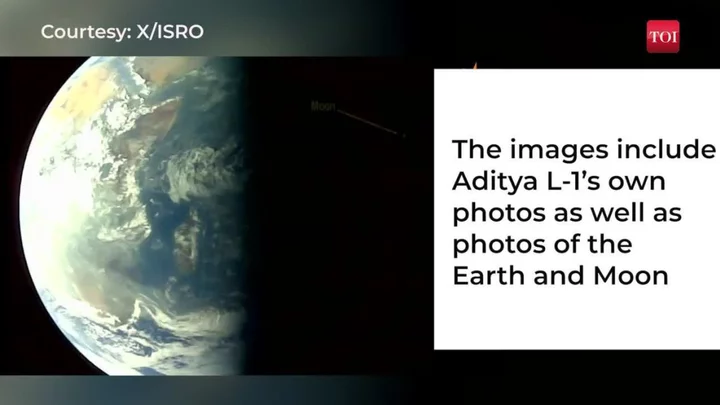
India’s Moon lander just detected movement below the lunar surface
India’s Vikram lunar lander has recorded movement below the surface of the Moon – but it’s probably not aliens. Experts think the movement is seismic activity – the lunar equivalent of earthquakes. It is the first time humans have detected the so-called moonquakes since the 1970s. The new activity was recorded by the Vikram lander’s onboard instrument for lunar seismic activity, a piece of kit designed “to measure ground vibrations generated by natural quakes, impacts, and artificial events,” the Indian Space Research Organization (ISRO) said. India’s Chandrayaan-3 mission saw it land the Vikram and its sister craft, the Pragyan rover, last month, becoming the first nation to land near the Moon’s little-explored South Pole. It also makes India just the fourth nation to land on the Moon, alongside the US, the former USSR and China. The seismic activity is the first recorded since the US Apollo programme, which ended in 1977. Those recordings yielded valuable data about the Moon’s makeup. Scientists have been able to theorise that the Moon has an inner core which is much less dense than the Earth’s and which is about 500km across. On Earth, seismic activity is caused by the shifting of the planet’s tectonic plates. But on the Moon, things are a bit different. The quake could be caused by thermal activity from the Sun, or by tidal stresses caused by Earth’s gravity, cracking the planet and causing the pieces to rub together. The team noted that the event is currently under investigation. Sign up to our free Indy100 weekly newsletter Have your say in our news democracy. Click the upvote icon at the top of the page to help raise this article through the indy100 rankings.
1970-01-01 08:00

Generation AI: education reluctantly embraces the bots
By Barbara Lewis and Supantha Mukherjee LONDON/STOCKHOLM At leading Swedish university Lund, teachers decide which students can use
1970-01-01 08:00
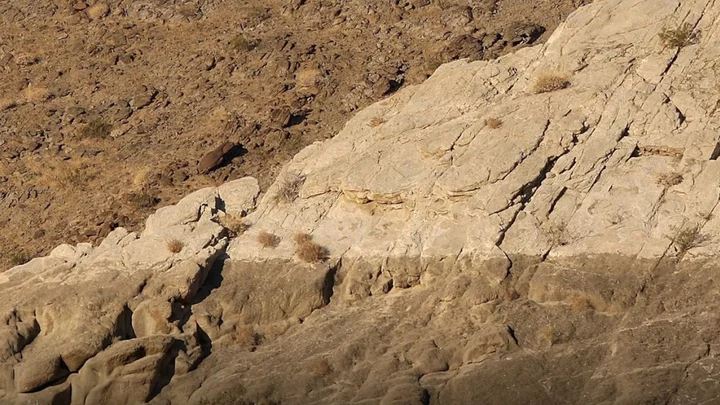
There’s a ‘lost continent’ which holiday makers have been visiting without knowing
Tourists from across the world may have been holidaying on the remains of a 'lost continent' that's been hiding in plain sight. The continent, known as Greater Adria, reportedly broke off from North Africa almost 250 million years ago. Around 120 years later, it started sinking under parts of Southern Europe including the Alps, the Apennines, the Balkans and Greece. Douwe van Hinsbergen, Professor of Global Tectonics and Paleogeography at Utrecht University, said: "Forget Atlantis. Without realising it, vast numbers of tourists spend their holiday each year on the lost continent of Greater Adria." He added: "The only remaining part of this continent is a strip that runs from Turin via the Adriatic Sea to the heel of the boot that forms Italy." This isn't the first time a 'lost' continent has been discovered... Scientists uncovered Zealandia (or Te Riu-a-Māui in the Māori language) that was reportedly 'lost' for 375 years. In the past, there's been speculation as to whether the continent actually exists. It wasn't until 2017 that geologists discovered the continent had been there all along. According to TN News, Zealandia is 1.89 million square miles in size. It was part of a supercontinent called Gondwana, which included most of Western Antarctica and Eastern Australia, over 500 million years ago. It was first said to have first discovered in 1642 by Dutch businessman and sailor Abel Tasman, who was desperate to uncover the "Great Southern Continent". Scientists agreed on the existence of Zealandia, which started to "pull away" from Gondwana for reasons scientists are still trying to understand. Most of the newfound continent is underwater and has been used as an example by geologists at the Zealand Crown Research Institute GNS Science on how something "very obvious" can take a while to uncover. Sign up for our free Indy100 weekly newsletter Have your say in our news democracy. Click the upvote icon at the top of the page to help raise this article through the indy100 rankings.
1970-01-01 08:00

China's top chipmaker may be in hot water as US lawmakers call for further sanctions after Huawei 'breakthrough'
Shares in SMIC, China's largest contract chipmaker, plunged on Thursday, after two US congressmen called on the White House to further restrict export sales to the company.
1970-01-01 08:00

UK has not backed down in tech encryption row, minister says
LONDON (Reuters) -Britain will require social media companies to take action to stop child abuse on their platforms, and if
1970-01-01 08:00

AI can help generate synthetic viruses and spark pandemics, warns former Google executive
Synthetic viruses could be generated through the misuse of artificial intelligence and potentially spark pandemics, a former Google executive and AI expert has warned. Google DeepMind co-founder Mustafa Suleyman expressed concern that the use of AI to engineer pathogens to cause more harm may lead to a scenario like a pandemic. “The darkest scenario is that people will experiment with pathogens, engineered synthetic pathogens that might end up accidentally or intentionally being more transmissible or more lethal,” he said in a recent episode of a podcast. Similar to how there are restrictions in place to prevent people from easily accessing pathogenic microbes like anthrax, Mr Suleyman has called for the means to restrict access to advanced AI technology and software that runs such models. “That’s where we need containment. We have to limit access to the tools and the know-how to carry out that kind of experimentation,” he said in The Diary of a CEO podcast. “We can’t let just anyone have access to them. We need to limit who can use the AI software, the cloud systems, and even some of the biological material,” the Google DeepMind co-founder said. “And of course on the biology side it means restricting access to some of the substances,” he said, adding that AI development needs to be approached with a “precautionary principle”. Mr Suleyman’s statements echo concerns raised in a recent study that even undergraduates with no relevant background in biology can detail suggestions for bio-weapons from AI systems. Researchers, including those from the Massachusetts Institute of Technology, found chatbots can suggest “four potential pandemic pathogens” within an hour and explain how they can be generated from synthetic DNA. The research found chatbots also “supplied the names of DNA synthesis companies unlikely to screen orders, identified detailed protocols and how to troubleshoot them, and recommended that anyone lacking the skills to perform reverse genetics engage a core facility or contract research organization”. Such large language models (LLMs), like ChatGPT, “will make pandemic-class agents widely accessible as soon as they are credibly identified, even to people with little or no laboratory training,” the study said. The study, whose authors included MIT bio risk expert Kevin Esvelt, called for “non-proliferation measures”. Such measures could include “pre-release evaluations of LLMs by third parties, curating training datasets to remove harmful concepts, and verifiably screening all DNA generated by synthesis providers or used by contract research organizations and robotic ‘cloud laboratories’ to engineer organisms or viruses”. Read More China’s ‘government-approved’ AI chatbot says Taiwan invasion is likely Government urged to address AI ‘risks’ to avoid ‘spooking’ public Scientists give verdict on Harvard professor’s claim of finding materials in sea from outside Solar System Google boss says he wants to make people ‘shrug’ Why is Elon Musk obsessed with the letter X? Elon Musk ‘borrowed $1bn from SpaceX’ at same time as Twitter acquisition
1970-01-01 08:00
